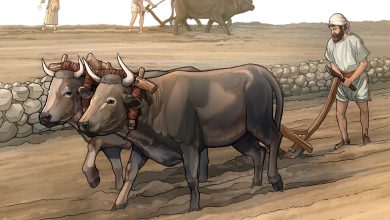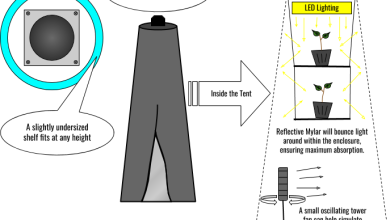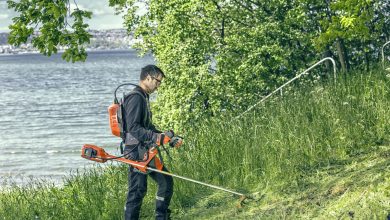Raising beneficial insects in the garden: The home of insects
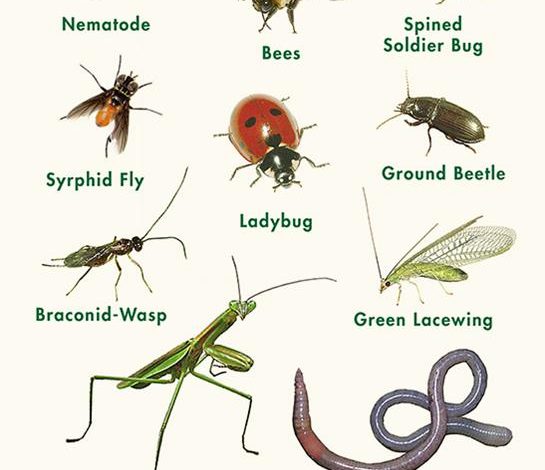
Today we will see how to raise beneficial insects for the garden. I am going to show you step by step how they make a “home for insects” in this garden using recycled materials.

Houses for beneficial insects
Recycling is one of the most important aspects in the organic garden, which is why we have already published other posts about it in Agrohuerto, such as the one on Recycled materials in the urban garden.
In the orchard of the Carabanchel Alto Health Center, in Madrid, we saw that they use recycled materials to do many things: terraces, stakes, compost bins… One of the things that most caught my attention was the little house to breed beneficial insects, such as The ladybugs.
Why raise insects in the garden?
Well, because they will help us a lot to fight against pests.
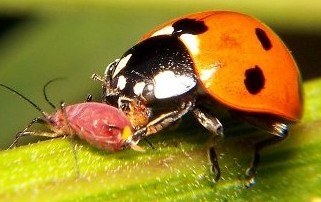
Many of these beneficial insects or natural enemies, such as the ladybug or earwig, feed on the adults or larvae of pest insects such as aphids.
Others, such as the wasp Aphidius matricariae, lay eggs inside the body of pest insects. In the end, the larvae that come out of the eggs cause them to die by feeding on the inside of their body… (Yes, a bit macabre… but that’s how it is).
How to breed beneficial insects?
In order to have beneficial insects in the garden, we can plant certain aromatic flowers that attract them. We can also build them a house to live in.
If we manage to make a home where these beneficial insects can be comfortable, they will not leave the garden, and from time to time they will go out for a walk through our gardens in search of pests to eliminate.
The philosophy for breeding beneficial insects (well… and just about any other insect or animal) is to provide them with shelter and food.
What they have done in this urban garden is to build a wooden house (now we will see how they build it) where ladybugs and other natural enemies of pests can live. A real home where they can take refuge when they need it, feed and grow, lay their eggs…
But… How to get the ladybugs to reach their new home? Well, this is what they told me they are going to do:
- Look for a plant with aphids in the garden. Although there is no «plague» as such, you can always find a group of aphids if you look closely… (Especially in a garden as large as yours).
- Always be on the lookout for some ladybugs in the orchard and catch at least three or four.
- When we already have hunters and prey, place both (leaves with aphids and ladybugs) in several of the compartments of the house to breed beneficial insects.
- And…voila! Ladybugs already have their shelter (the house with all the recycled materials that we will now see) and food, which are aphids. Mission accomplished!
insect house materials

The first thing they did was build a wooden structure as a house (it even has a roof). The insect home was to have several floors and also partitions, so they divided the interior into several «rooms.»
In each of the compartments of the house for insects they had to put different types of materials. These materials had to have some specific characteristics such as:
- Have holes or nooks and crannies where ladybugs could take refuge and lay eggs
- be resistant to rain and wind
- Be harmless to ladybugs and their young («natural» materials without plastics or paints).
In this therapeutic garden they looked for various types of recycled materials that met these characteristics.As they had pieces of wood left over from making terraces, they used them as shelter for ladybugs in two ways:
- Large blocks of wood that had previously been bored with a drill:
- Smaller pieces of wood on top of each other creating several paths or gaps between them.

They also placed in other «rooms» of the house a piece of a tree trunk with some cracks (a good shelter for insects), bricks, bamboo canes one on top of the other, trimmings of heather (a bush that they have in the orchard) and crumpled butcher paper.
Beneficial insect house photo
The result is this comfortable and beautiful house to breed beneficial insects:

I hope you liked it and that you can give new ideas on how to recycle in the garden or how to breed or attract beneficial insects.

![Photo of The Pine: [Planting, Characteristics, Irrigation, pH, Pruning, Problems]](https://www.complete-gardening.com/wp-content/uploads/2022/08/the-pine-planting-characteristics-irrigation-ph-pruning-problems.jpg)
